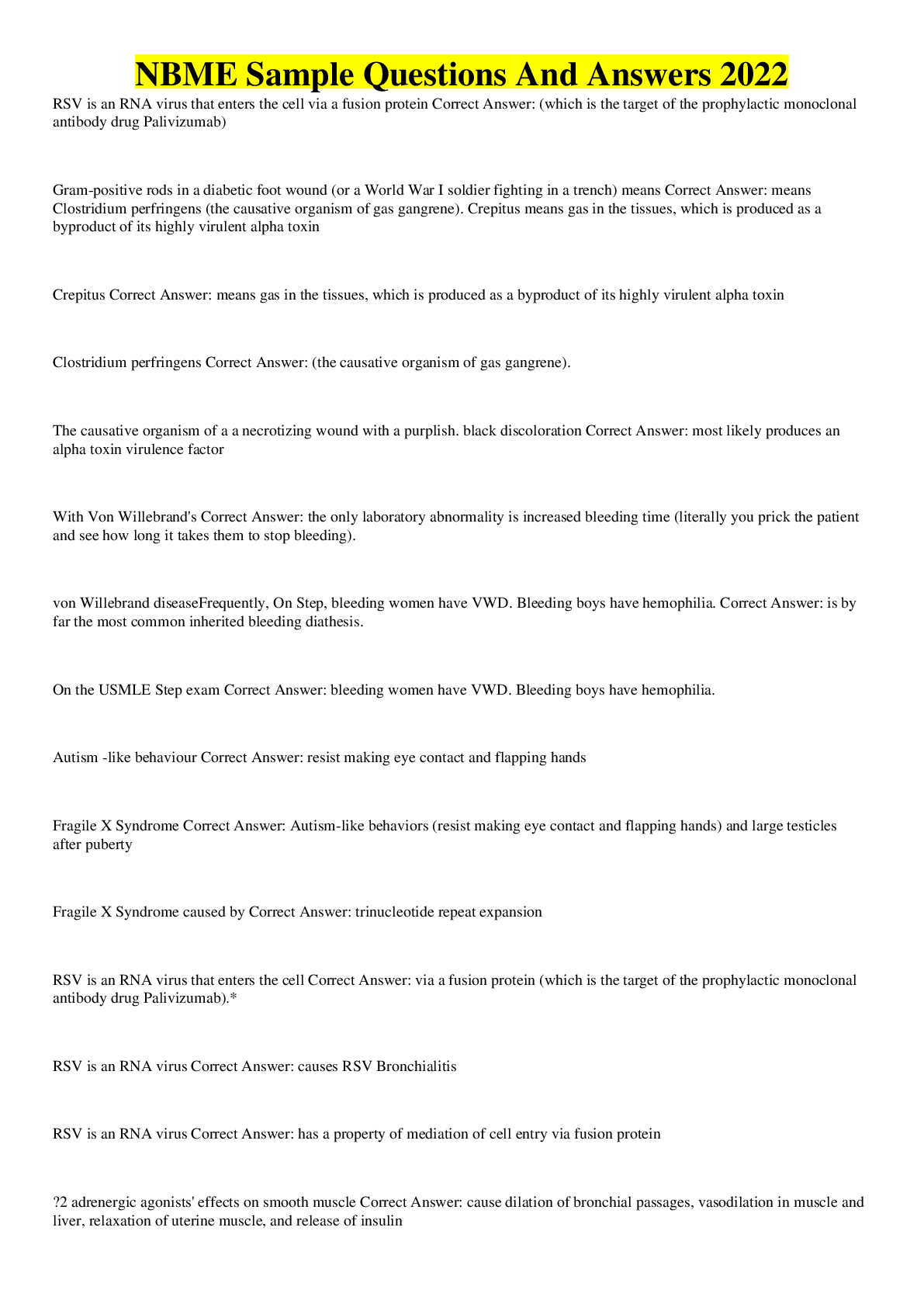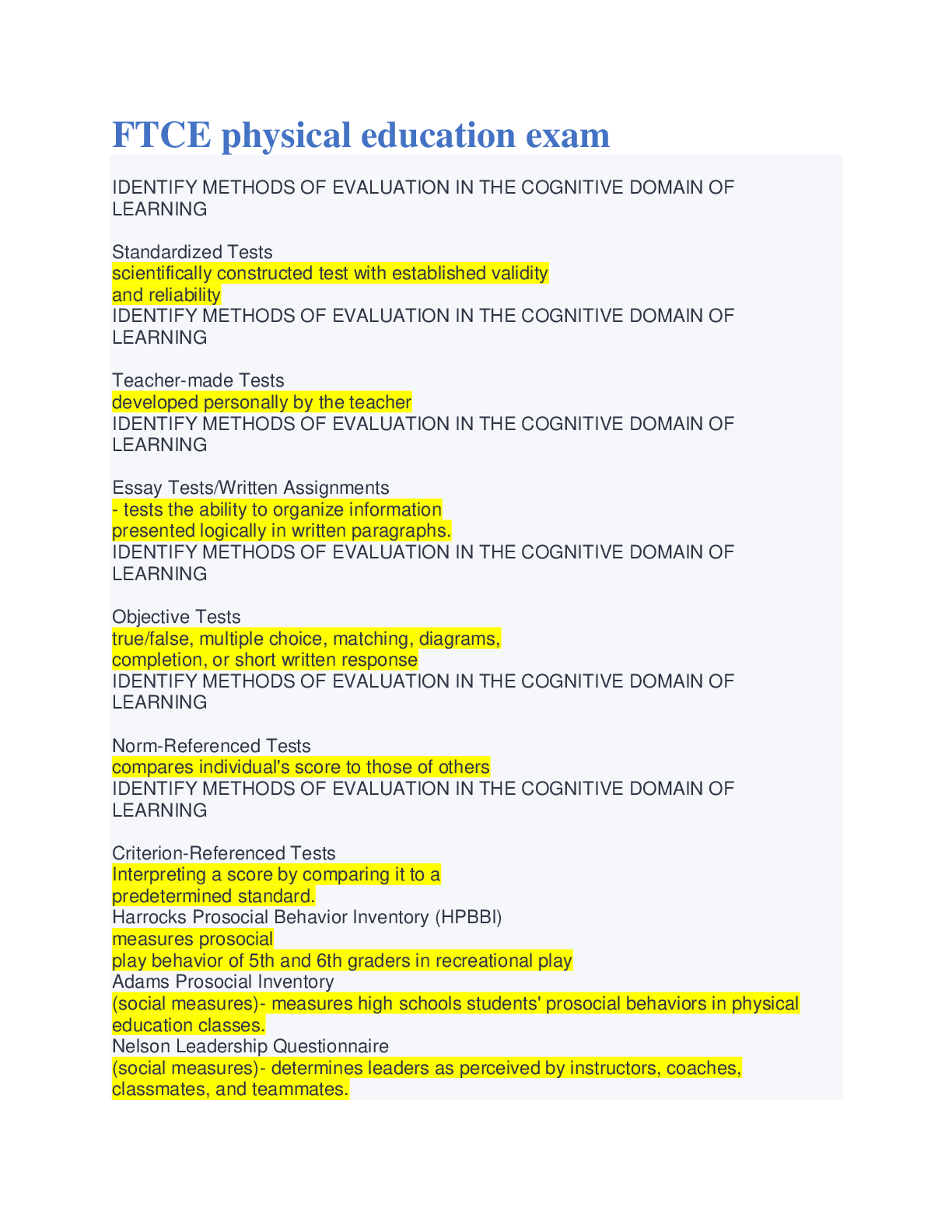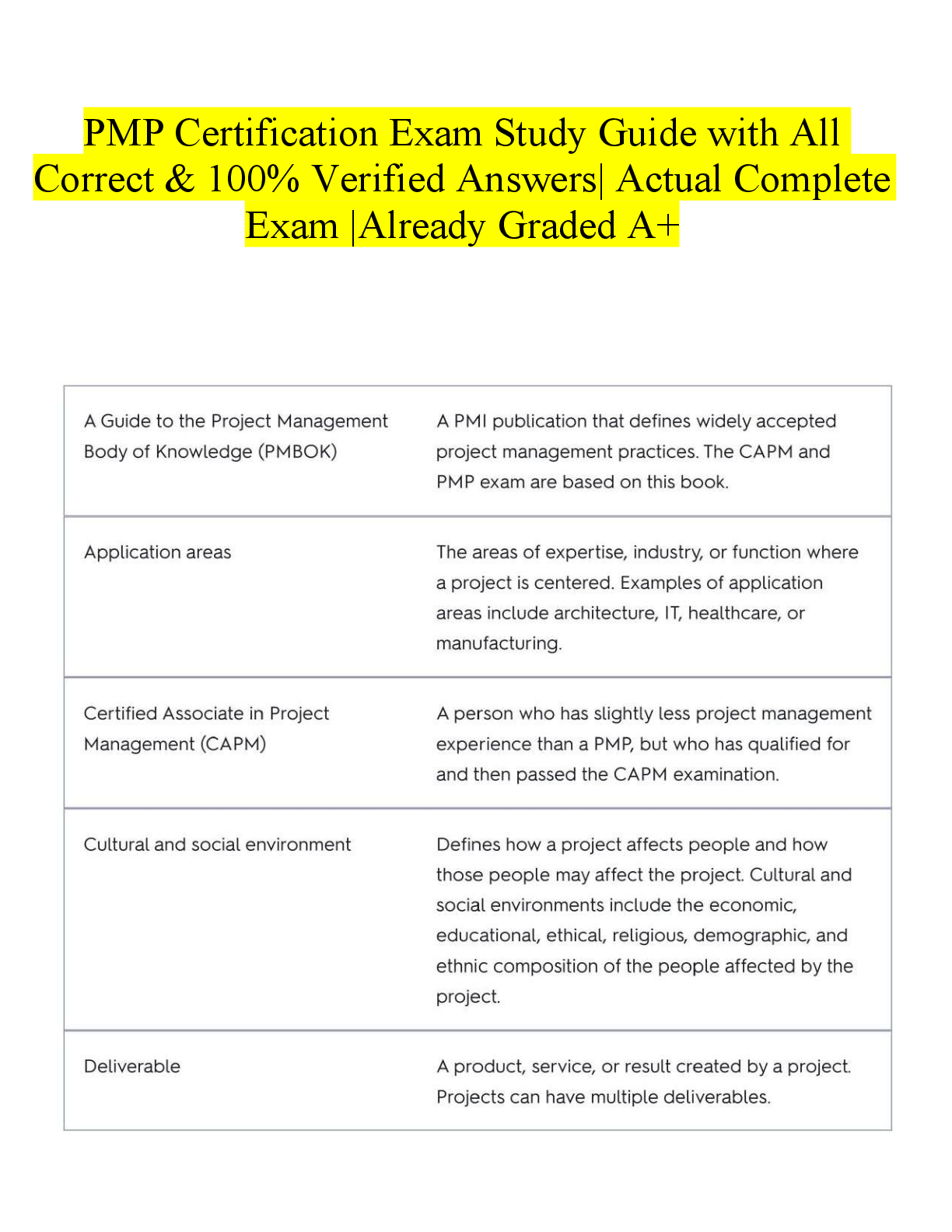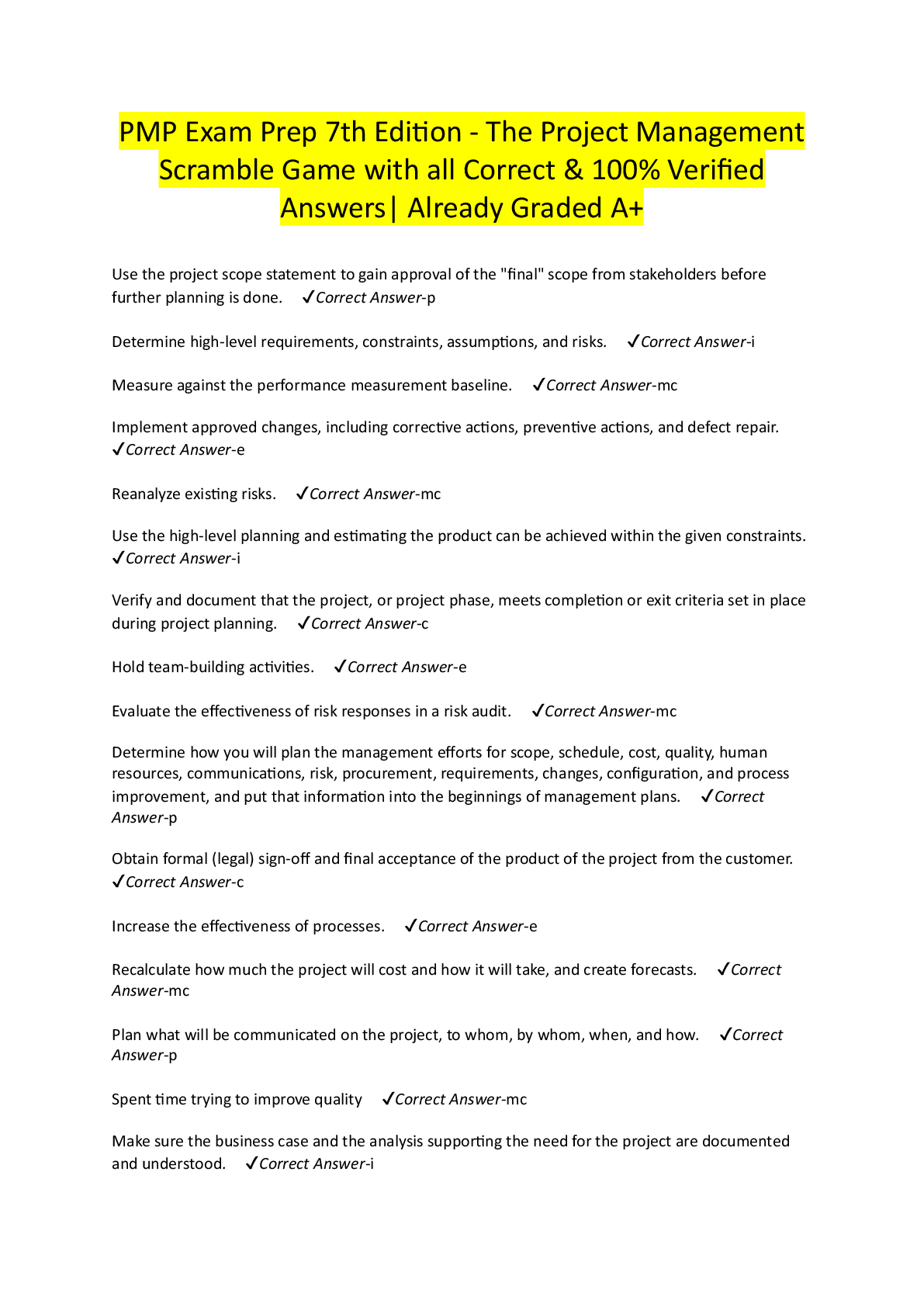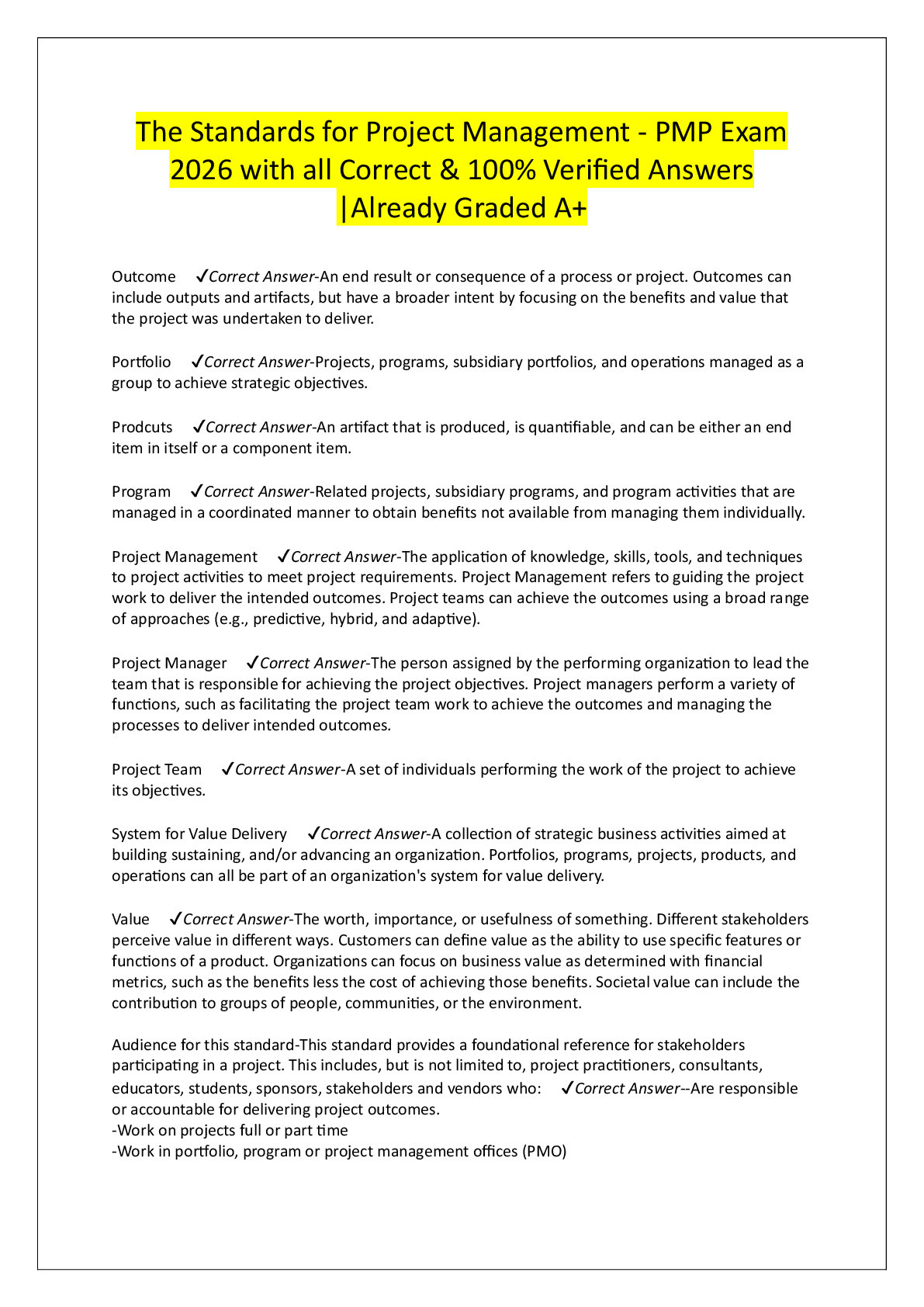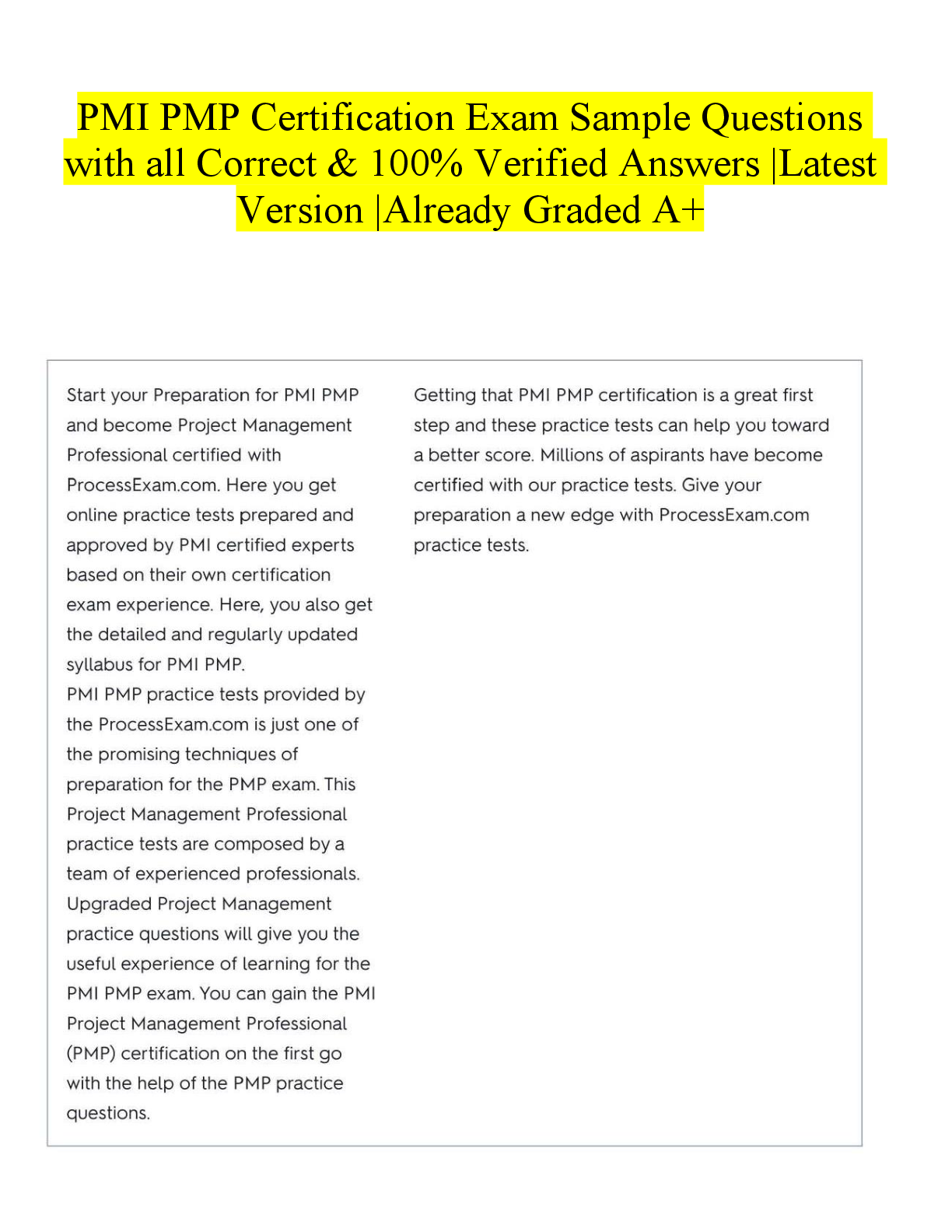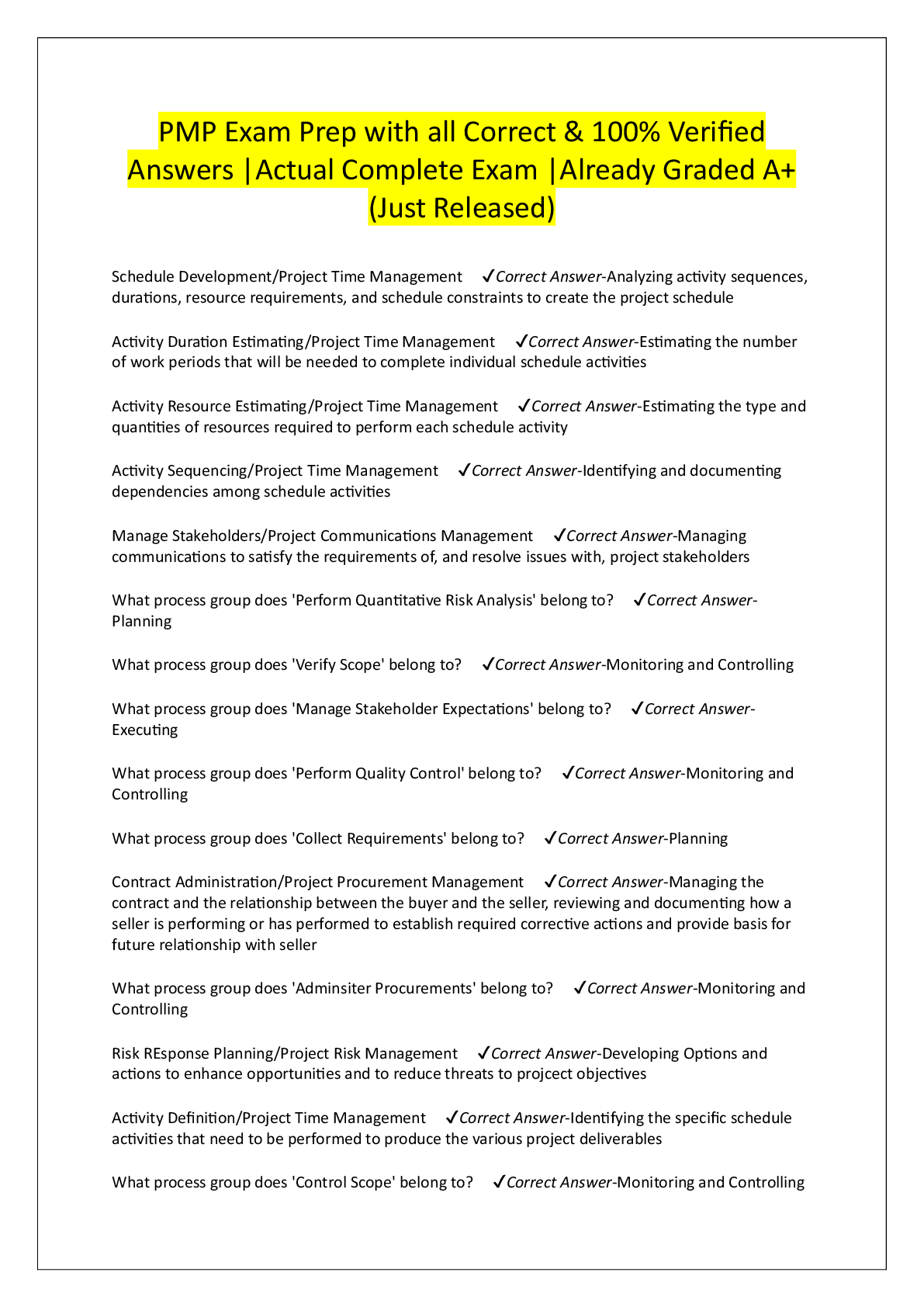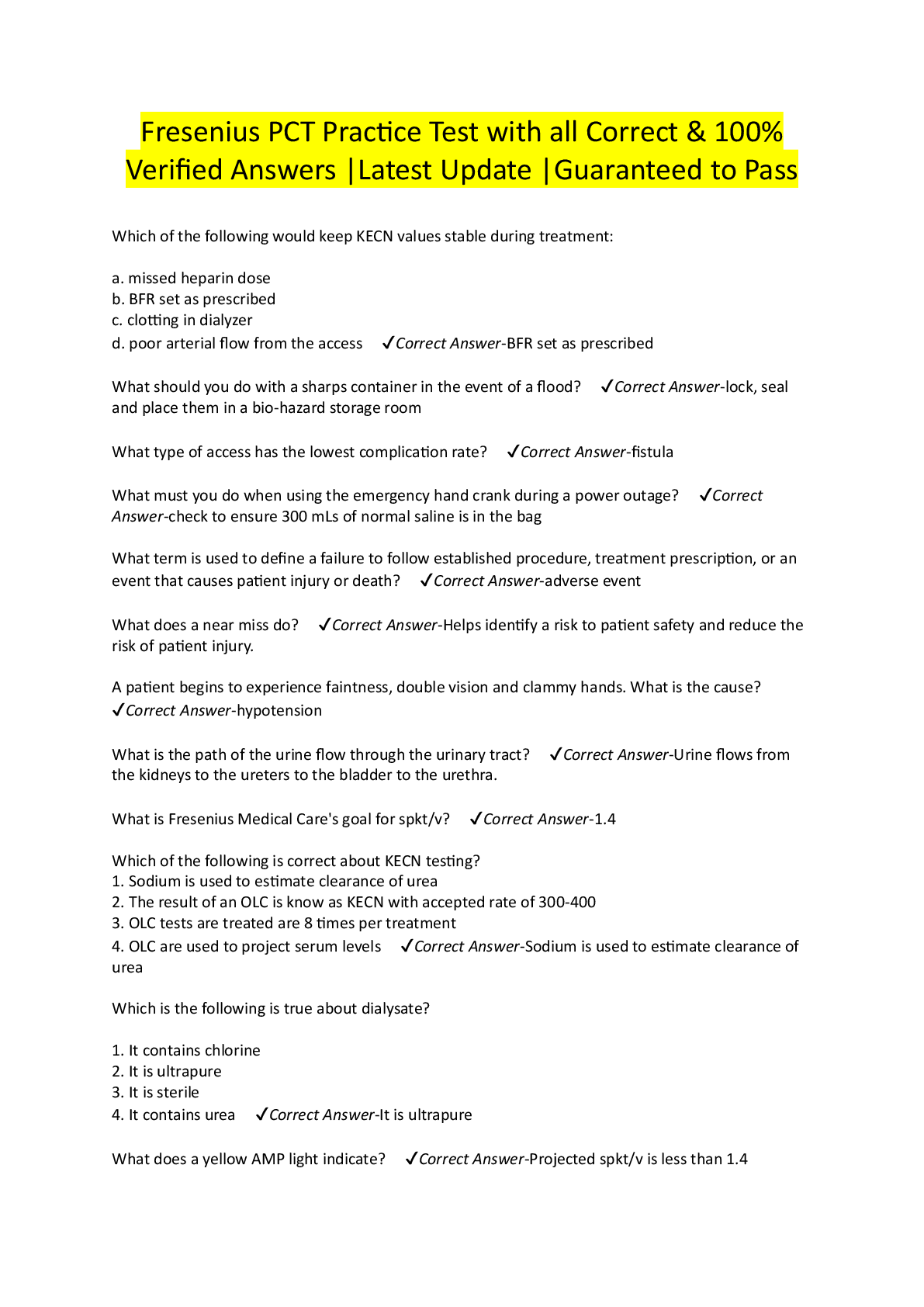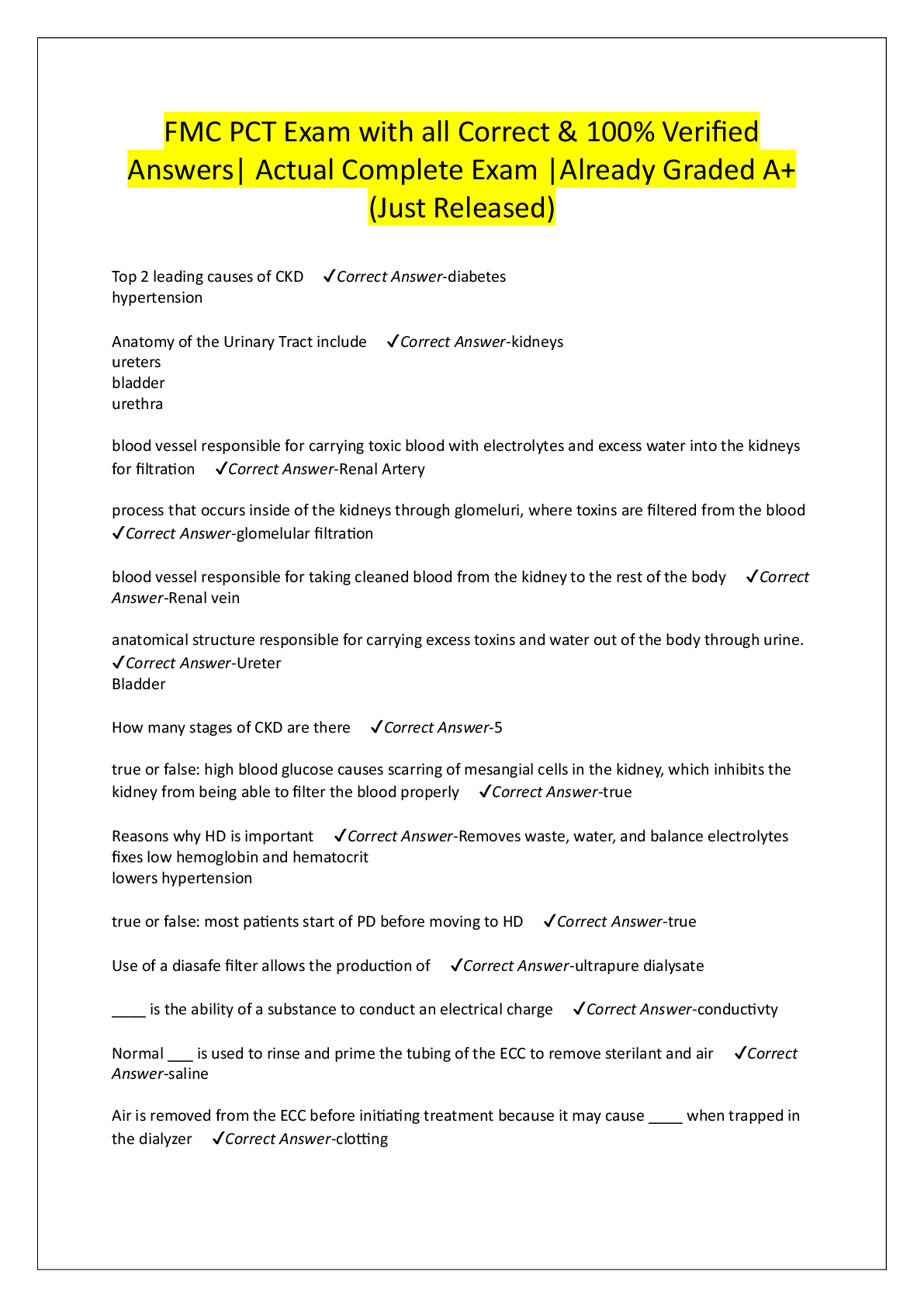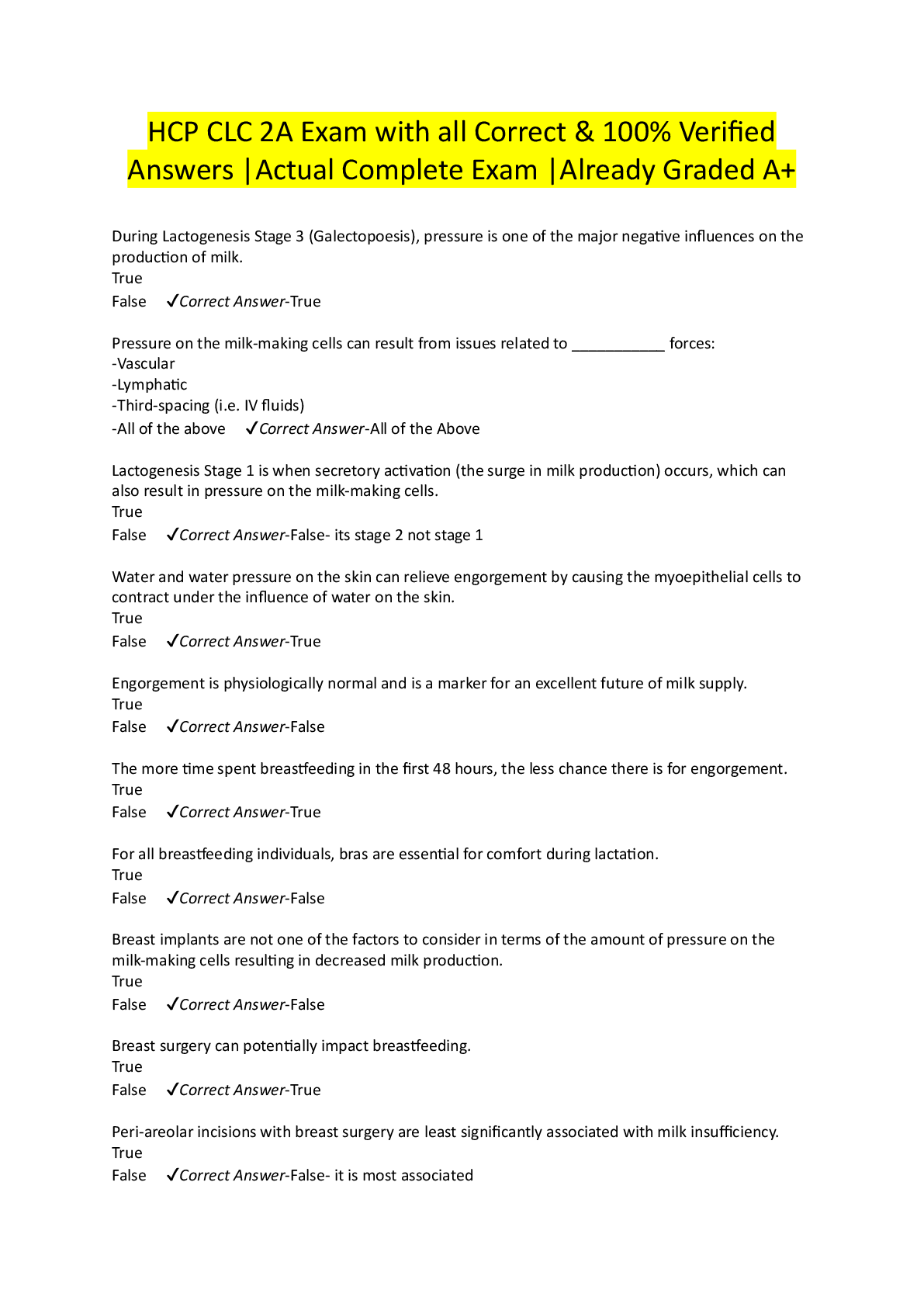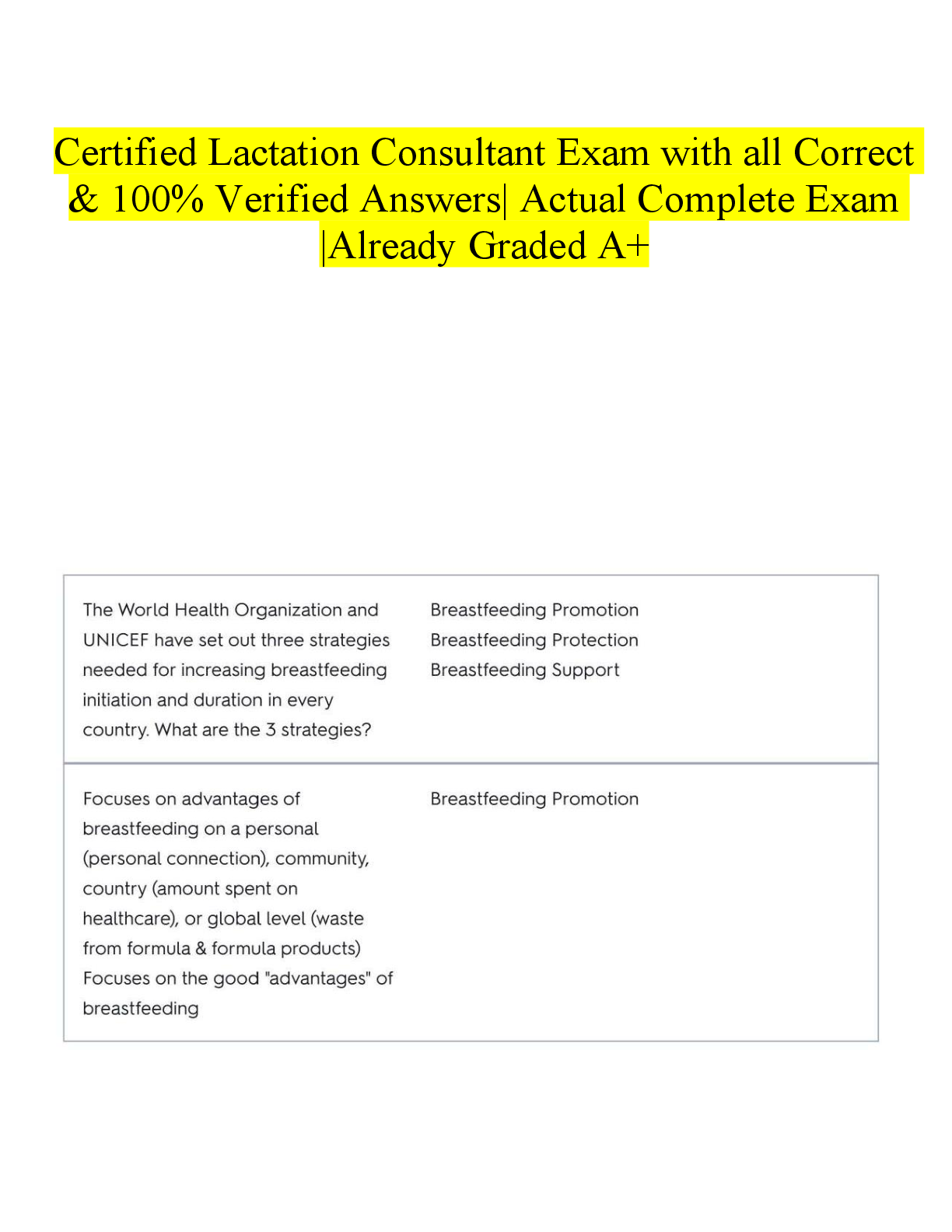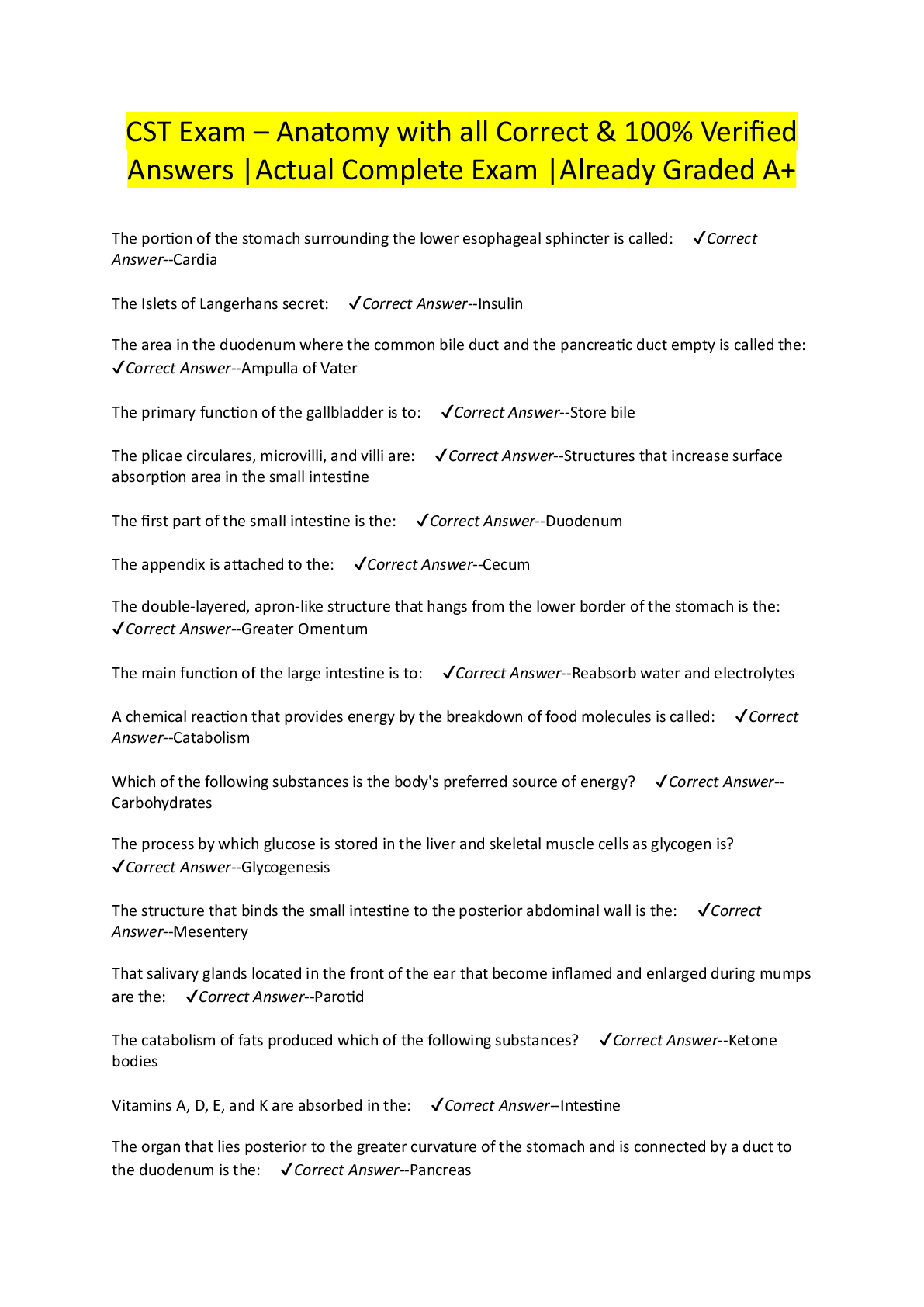Forensic and Criminal Investigation > EXAM > Forensic Psychology Midterm 1 QUESTIONS AND ANSWERS (All)
Forensic Psychology Midterm 1 QUESTIONS AND ANSWERS
Document Content and Description Below
Forensic Psychology Midterm 1 Investigative Psychology Correct Answer: the application of psychology to criminal investigation (broad definition involving profiling, police lineups, risk assessmen ... t, polygraphing, hypnosis) Polygraph Correct Answer: This isn't used in the courtroom because it only measures physical responses, not the truth. Criminal Profiling Correct Answer: Identifying personal characteristics, behavioral tendencies, geographic location, demographics, biographical descriptors based on crime scene characteristics (1) narrow suspects (2) form predictions Correct Answer: 2 Goals of Criminal Profiling: 1971 Correct Answer: What year did Criminal Profiling become popular, being used by the FBI? Arson (fire), burglary, shoplifting, white collar crimes Correct Answer: Profiling has expanded to what 4 things? Reizer Correct Answer: Who started profiling? based on intuition, no scientifically based, doesn't keep confidentiality, no uniform standards to abide by, "art" not science Correct Answer: Why is profiling criticized? (1) Dynamic vs Static Risk Factors (2) Crime scene concepts (MO, Signature, Organized vs Disorganized, Undoing, Trophy, Staging) Correct Answer: What are the two parts of profiling examinations? MO Correct Answer: The method an offender uses to successfully commit a crime (changing with time after offender becomes more intelligent) Signature Correct Answer: The means to communicate beyond what is necessary to commit a crime (always the same; used to scare/intrege) Organized Correct Answer: This type of crime scene implicates planning and premeditation which is key for prosecution Disorganized Correct Answer: This type of crime scene show impulsiveness and reaction in the heat of the moment Undoing Correct Answer: The behavioral pattern at a crime scene that may show remore or justifcation as a defense mechanism Trophy Correct Answer: Taking something, usually consistent and possibly as a signature Staging Correct Answer: The intentional alteration of a crime scene often found with suicide before the police arrive with a purpose to redirect investigations (1) Professional Experience (2) Criminal experience/confidence (3) Contact with the criminal justice system (4) Media and pop culture (5) Offender mood/mental state (important!) (6) X-Factors (unexpected influences) Correct Answer: 6 Factors Shaping MO (1) Psychopathy (2) Personality Correct Answer: 2 Factors Shaping Signature Psychological Autopsy Correct Answer: The equivocal death analysis; reconstruction of psychological reasons for determined death with little scientific evidence (1958 - first used in LA) Geographical profiling Correct Answer: The analysis of location of death explaining reasons for movement of offenders (1) CQT - asking an order of questions (2) Relevant and Irrelevant Questions Correct Answer: 2 methods of using a polygraph Countermeasures Correct Answer: What are used in the courtroom to distort polygraph information? Forensic Hypnosis Correct Answer: Forensic procedures used to enhance memory and recall prior to court date (1) CBT (calmly rethink/relive experience) (2) HTT (psychodynamically based) Correct Answer: 2 Theories of how forensic hypnosis work (1) Facial Composite (2) Photoboard (3) Photospread (4) Mug Shot Correct Answer: 4 Ways to Identify and Offender Artist Sketch, Commerical Composite Kit, Computer Generation Correct Answer: 3 ways to use a facial composite (1) Trial Consultant (2) Expert Witness (more common) Correct Answer: What are the 2 roles of forensic psychologists in the courtroom? 1960s Correct Answer: What years were psychiatrists allowed in the courtroom? 1962 Correct Answer: What year did Jenkins v US allow psychologists in the courtroom since testing is needed for risk assessment (1) Supreme Court (2) Appellate Court (always backed up) (3) Trial Court (jury decides; limited jurisdiction) (4) Federal Court/Other (small claims, mental health, nonviolent crimes) Correct Answer: 4 Parts of the Federal Court System State Court System Correct Answer: Mental Health System, Drug Court, etc differs in which state court system? Civil court: 2+ parties (sued) Criminal Court: violation of law (state v ___) Correct Answer: How are civil and criminal court different? Jury selection Correct Answer: The main job of psychologists in the courtroom is what? suggestions to attorneys about what questions to ask (nonverbal) Correct Answer: Voire Dire State Laws Correct Answer: Expert certification for expert testimony in the courtroom is governed by what? Daubert Standard Correct Answer: What gives expectations of evidence in court; asks if an expert testimony is: Reliable, Legally Sufficient and Relevant? (Judge seeing evidence before a hearing) Court Ordered = expert testimony must be shared Correct Answer: What type of information must be shared in court? (1) FIT - how is issue related to evidence? (2) Hypothesis is testable (3) Scientific evidence is reliable (4) Scientific evidence is valid (5) Error rate is small (6) Peer reviewed/accepted generally (7) Doesn't prejudice, confuse, or mislead jury Correct Answer: 7 Parts of the Daubert Standard [Show More]
Last updated: 3 years ago
Preview 1 out of 7 pages
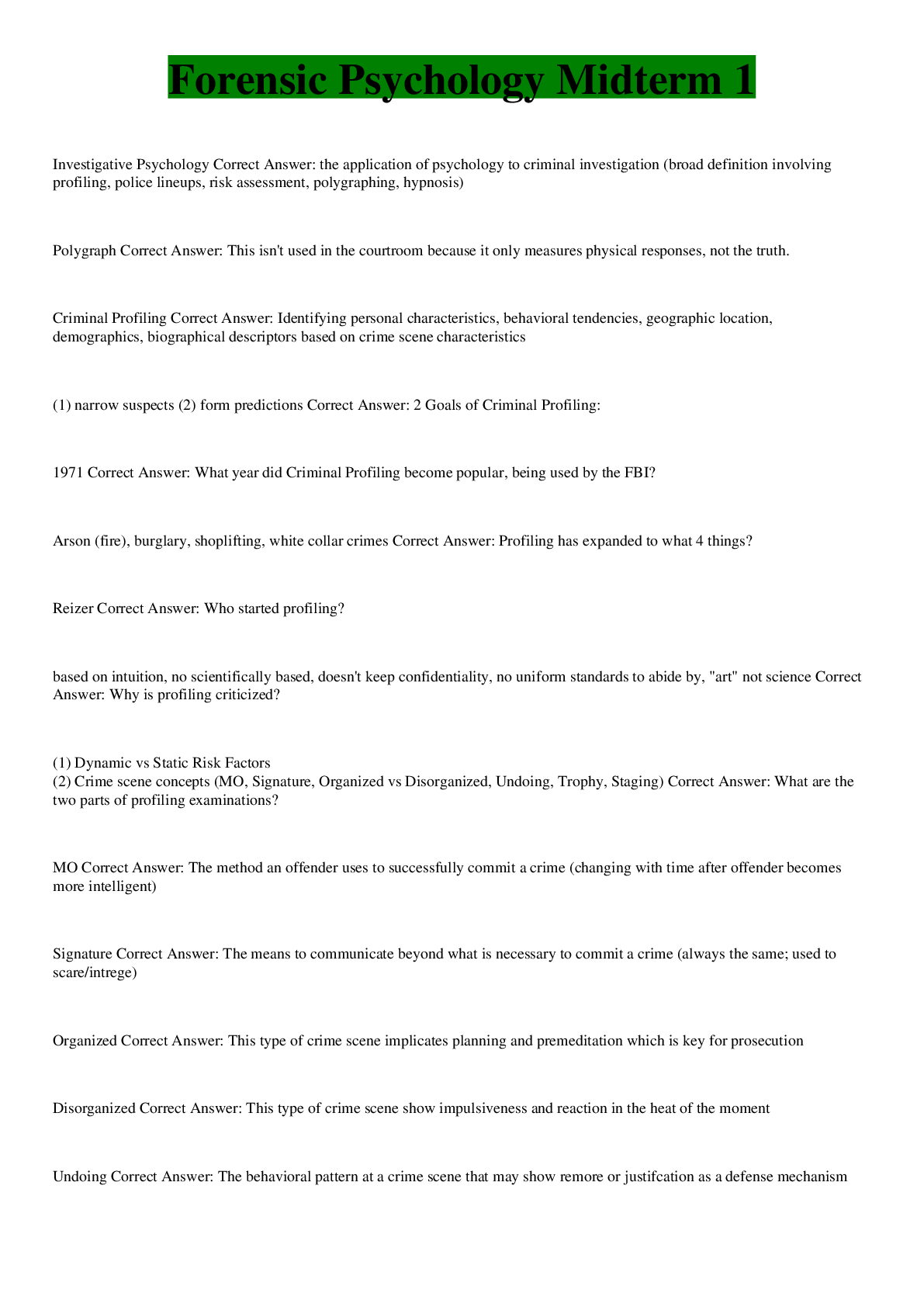
Buy this document to get the full access instantly
Instant Download Access after purchase
Buy NowInstant download
We Accept:

Reviews( 0 )
$10.00
Can't find what you want? Try our AI powered Search
Document information
Connected school, study & course
About the document
Uploaded On
Jul 14, 2022
Number of pages
7
Written in
All
Additional information
This document has been written for:
Uploaded
Jul 14, 2022
Downloads
0
Views
111

